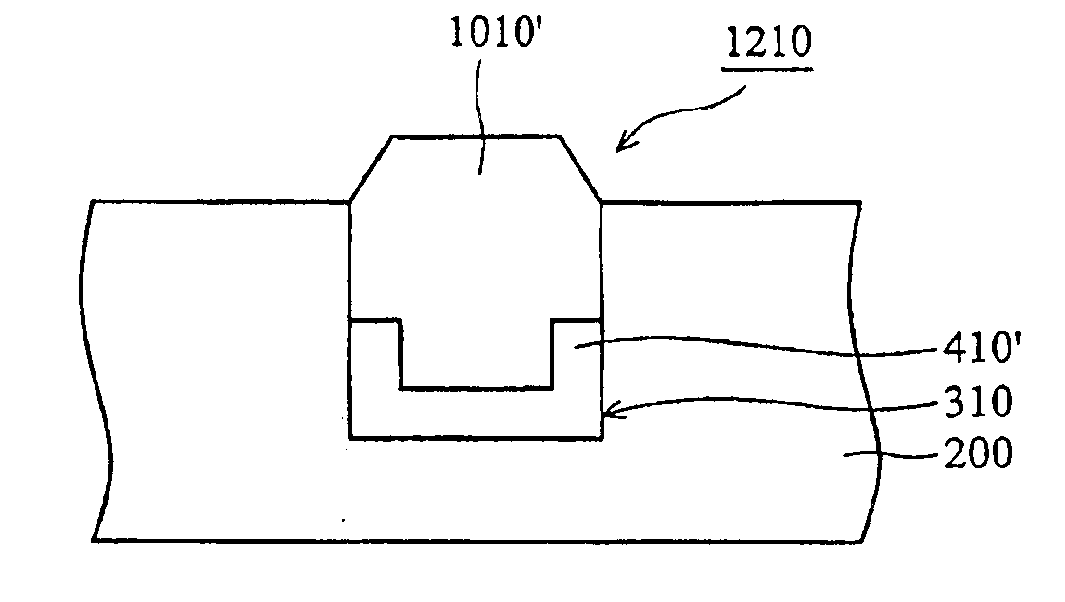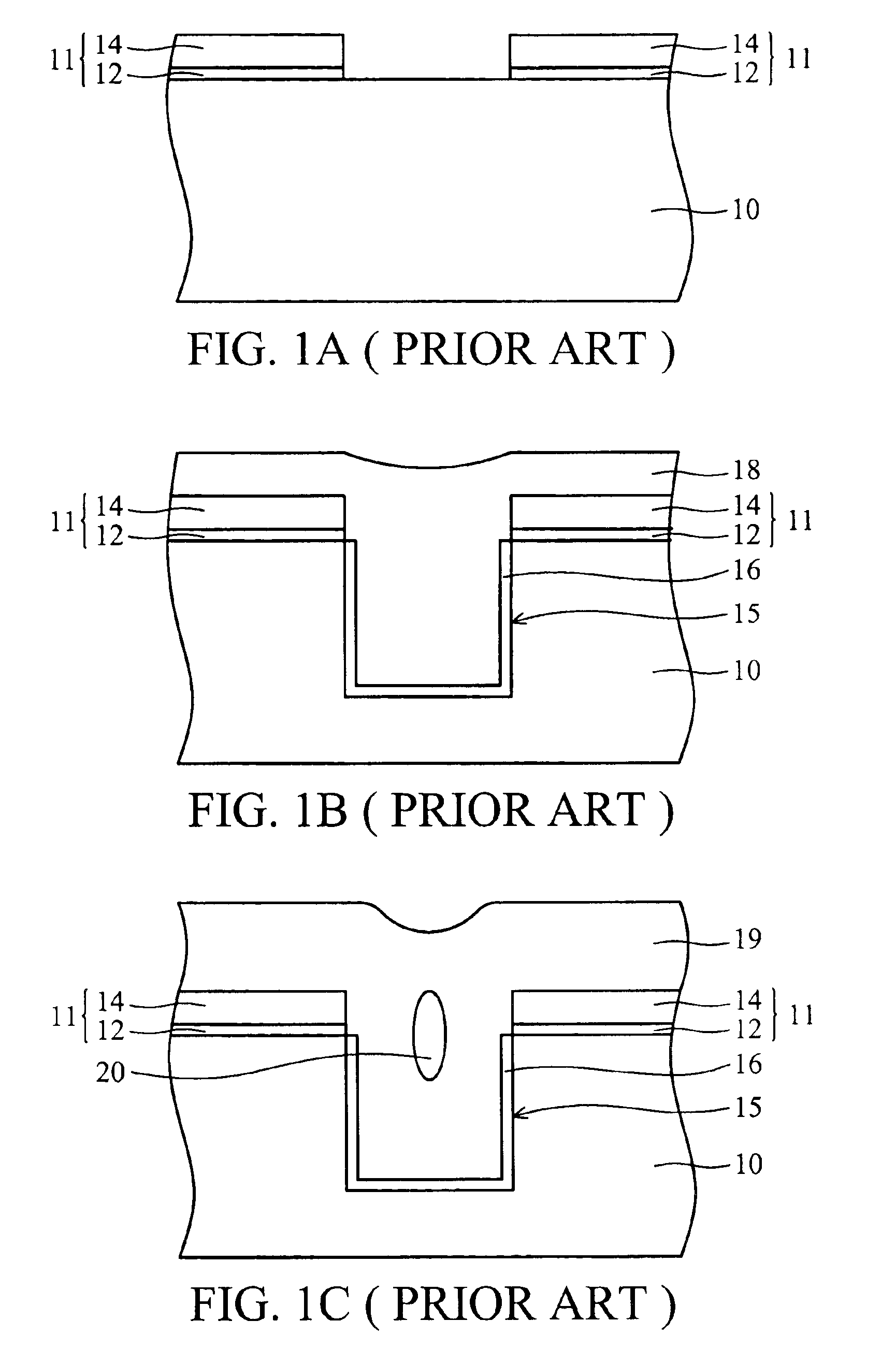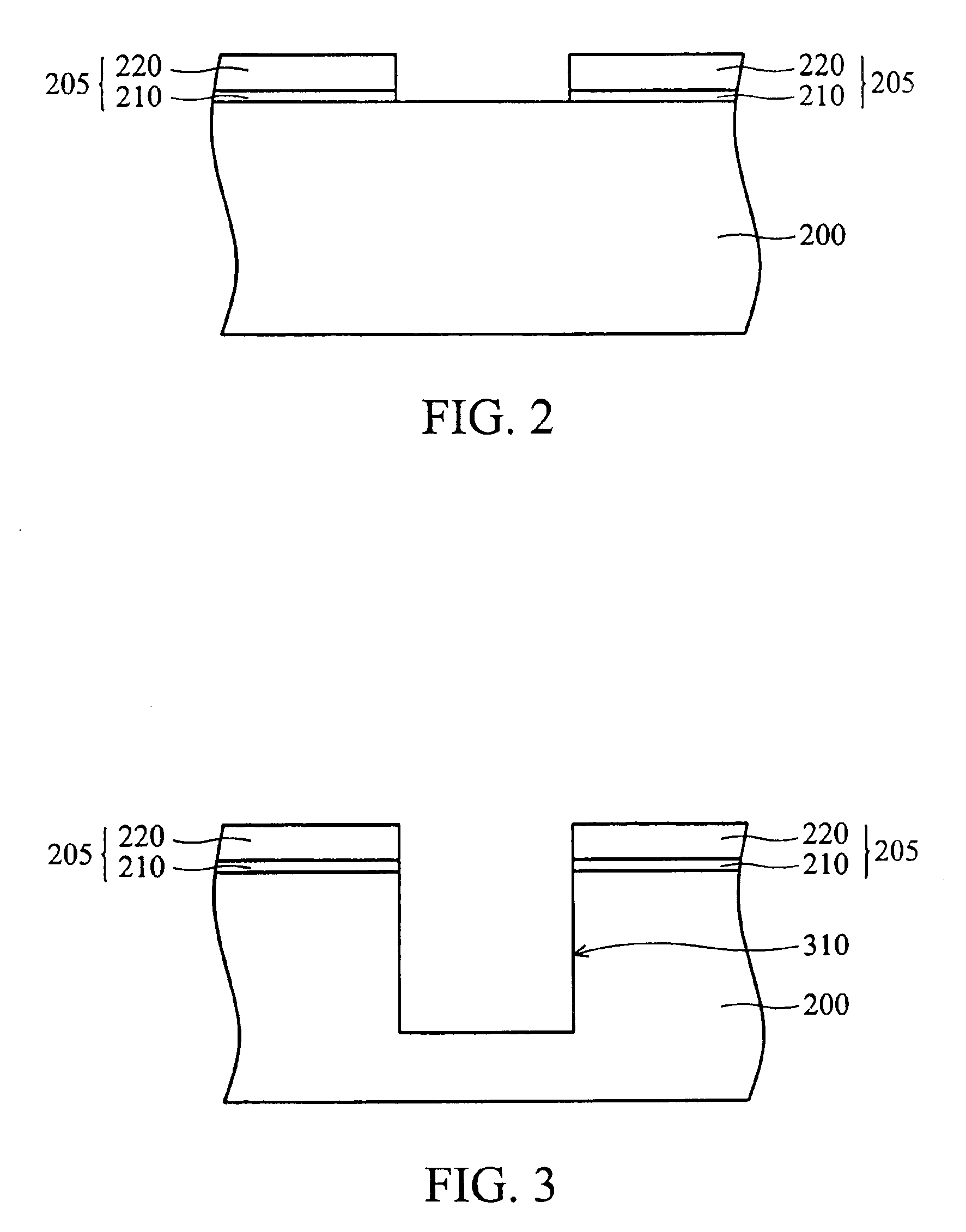Method of reducing trench aspect ratio
- Summary
- Abstract
- Description
- Claims
- Application Information
AI Technical Summary
Benefits of technology
Problems solved by technology
Method used
Image
Examples
Embodiment Construction
A preferred embodiment of the invention will now be described in detail with reference to the accompanying drawings.
FIGS. 2˜12 are sectional views showing the trench isolation process of the present invention.
In FIG. 2, a semiconductor substrate 200, such as a silicon wafer, is provided. A shield layer 205 preferably comprising a pad oxide layer 210 and a silicon nitride layer 220 is formed on part of the substrate 200. The pad oxide layer 210 can be a SiO2 layer formed by thermal oxidation or CVD (chemical vapor deposition). The silicon nitride layer 220 can be a Si3N4 layer formed by CVD. For example, the thickness of the pad oxide layer 210 is about 100 Å and the thickness of the silicon nitride layer 220 is about 900 Å. The shield layer 205 serves as a stacked mask for defining an isolation area in the substrate 200.
In FIG. 3, using the shield layer 205 as a mask, part of the substrate 200 is etched to form a trench 310. The depth of the trench 310 is, for example, 2600˜5000 Å. ...
PUM
 Login to View More
Login to View More Abstract
Description
Claims
Application Information
 Login to View More
Login to View More - R&D
- Intellectual Property
- Life Sciences
- Materials
- Tech Scout
- Unparalleled Data Quality
- Higher Quality Content
- 60% Fewer Hallucinations
Browse by: Latest US Patents, China's latest patents, Technical Efficacy Thesaurus, Application Domain, Technology Topic, Popular Technical Reports.
© 2025 PatSnap. All rights reserved.Legal|Privacy policy|Modern Slavery Act Transparency Statement|Sitemap|About US| Contact US: help@patsnap.com



